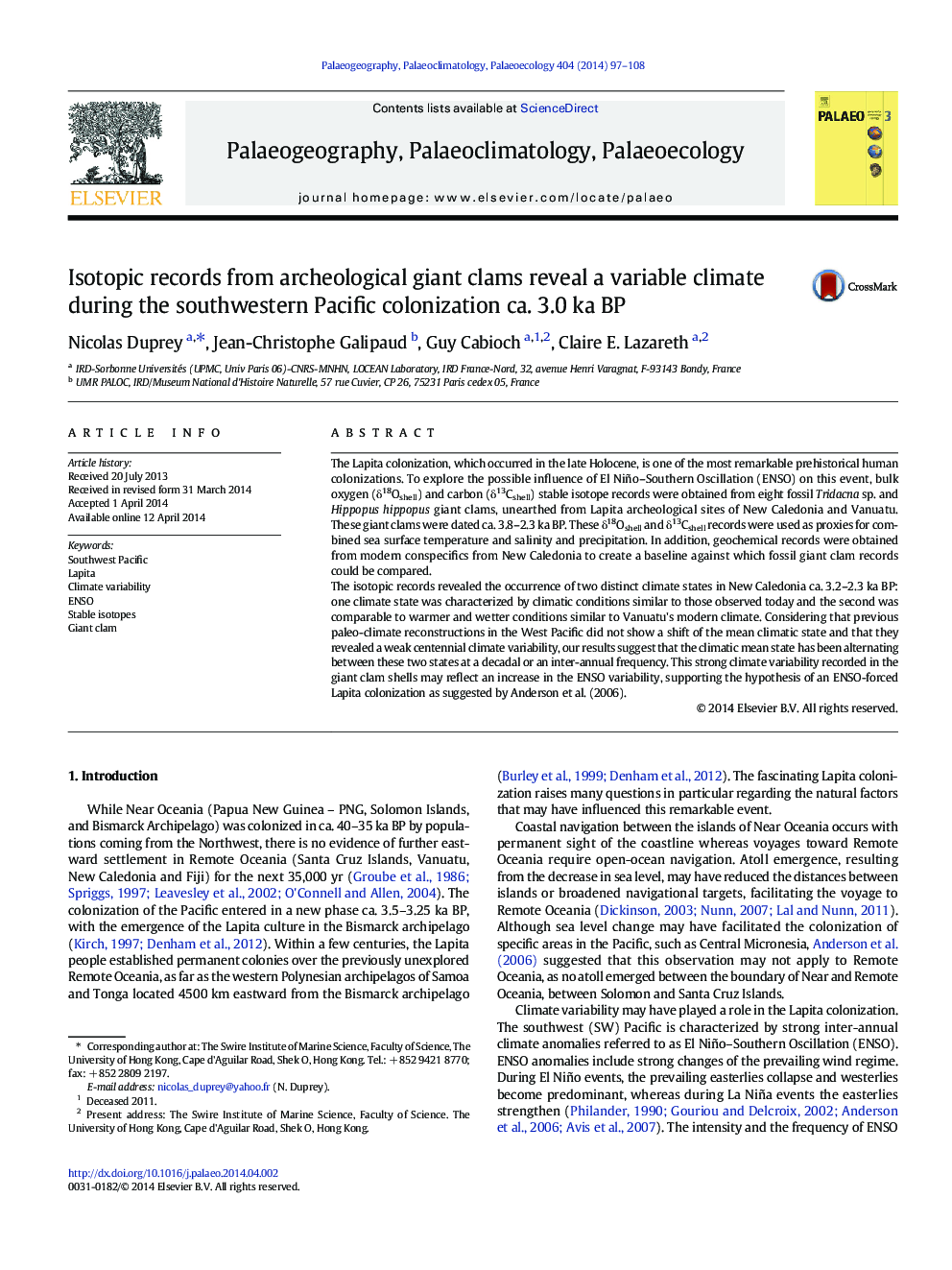| کد مقاله | کد نشریه | سال انتشار | مقاله انگلیسی | نسخه تمام متن |
|---|---|---|---|---|
| 6350144 | 1622186 | 2014 | 12 صفحه PDF | دانلود رایگان |

- Isotopic records identified two distinct climate states in NC ~Â 3.6-2.3Â ka BP.
- State 1: climate similar to present conditions
- State 2: warmer and rainier climate, close to Vanuatu's modern climate
- These changes may have occurred at an inter-decadal or inter-annual time scale.
- This strong climatic variability is most likely linked to a strengthened ENSO.
The Lapita colonization, which occurred in the late Holocene, is one of the most remarkable prehistorical human colonizations. To explore the possible influence of El Niño-Southern Oscillation (ENSO) on this event, bulk oxygen (δ18Oshell) and carbon (δ13Cshell) stable isotope records were obtained from eight fossil Tridacna sp. and Hippopus hippopus giant clams, unearthed from Lapita archeological sites of New Caledonia and Vanuatu. These giant clams were dated ca. 3.8-2.3 ka BP. These δ18Oshell and δ13Cshell records were used as proxies for combined sea surface temperature and salinity and precipitation. In addition, geochemical records were obtained from modern conspecifics from New Caledonia to create a baseline against which fossil giant clam records could be compared.The isotopic records revealed the occurrence of two distinct climate states in New Caledonia ca. 3.2-2.3 ka BP: one climate state was characterized by climatic conditions similar to those observed today and the second was comparable to warmer and wetter conditions similar to Vanuatu's modern climate. Considering that previous paleo-climate reconstructions in the West Pacific did not show a shift of the mean climatic state and that they revealed a weak centennial climate variability, our results suggest that the climatic mean state has been alternating between these two states at a decadal or an inter-annual frequency. This strong climate variability recorded in the giant clam shells may reflect an increase in the ENSO variability, supporting the hypothesis of an ENSO-forced Lapita colonization as suggested by Anderson et al. (2006).
Journal: Palaeogeography, Palaeoclimatology, Palaeoecology - Volume 404, 15 June 2014, Pages 97-108